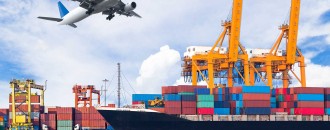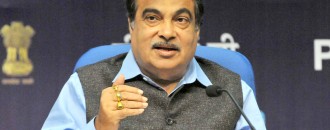
Finance Minister addresses inverted duty structure
The Dollar Business Bureau  Ministry of Finance’s Economic Survey, which was released yesterday, had 28 references of ‘Make in India’ and asked an existential question about this pet project of Prime Minister Narendra Modi. The question was, “Is manufacturing the sector that Make in India (should) focus on?” And answering this in the affirmative, from the floor of the parliament, while presenting Union Budget 2015, was Finance Minister Arun Jaitley, as he made 10 references to ‘Make in India’ in his 90 minute budget speech. Not only did he say that ‘Make in India’ was key to improving the share of manufacturing in India’s GDP from the current 17%, thereby creating more jobs, but also said it was core to the government’s plans of making India a global manufacturing hub. To Tackle Competition And as a first major step towards making this possible, Jaitley, among other things like a tax ‘pass through’ to attract capital via Category I and Category II Alternative Investment Funds, reduced/eliminated the customs duty on several raw materials and components that are key to manufacturing. Some of these items on which customs duty was reduced/eliminated to reduce the cost of raw materials include ethylene dichloride (EDC), vinyl chloride monomer (VCM) and styrene monomer (SM) – from 2.5% to 2%; isoprene and liquefied butanes – from 5% to 2.5%; butyl acrylate – from 7.5% to 5%; black light unit module for use in the manufacture of LCD/LED TV panels – from 10% to nil; HDPE for use in the manufacture of telecommunication grade optical fibre cables – from 7.5% to nil etc. Fighting Inversion On the other hand, Jaitley also reduced the duty on several other items to address the issue of duty inversion (An inverted duty structure is a situation wherein the customs duty on raw materials/components are higher than the duty on the finished product). Some of the items on which customs duty was reduced to address an inverted duty structure include metal parts for use in the manufacture of electrical insulators; ethylene-propylene-non-conjugated-diene rubber (EPDM); water blocking tape and mica glass tape for use in the manufacture of insulated wires and cables; anthraquinone for manufacture of hydrogen peroxide; and sulphuric acid for use in the manufacture of fertilisers etc. On the other hand, Jaitley also increased the customs duty on three items – metallurgical coke from 2.5% to 5%; iron and steel and articles of iron or steel from 10% to 15% (no change in effective rate); and commercial Vehicles from 10% to 40% (effective rate from 10% to 20%).
Ministry of Finance’s Economic Survey, which was released yesterday, had 28 references of ‘Make in India’ and asked an existential question about this pet project of Prime Minister Narendra Modi. The question was, “Is manufacturing the sector that Make in India (should) focus on?” And answering this in the affirmative, from the floor of the parliament, while presenting Union Budget 2015, was Finance Minister Arun Jaitley, as he made 10 references to ‘Make in India’ in his 90 minute budget speech. Not only did he say that ‘Make in India’ was key to improving the share of manufacturing in India’s GDP from the current 17%, thereby creating more jobs, but also said it was core to the government’s plans of making India a global manufacturing hub. To Tackle Competition And as a first major step towards making this possible, Jaitley, among other things like a tax ‘pass through’ to attract capital via Category I and Category II Alternative Investment Funds, reduced/eliminated the customs duty on several raw materials and components that are key to manufacturing. Some of these items on which customs duty was reduced/eliminated to reduce the cost of raw materials include ethylene dichloride (EDC), vinyl chloride monomer (VCM) and styrene monomer (SM) – from 2.5% to 2%; isoprene and liquefied butanes – from 5% to 2.5%; butyl acrylate – from 7.5% to 5%; black light unit module for use in the manufacture of LCD/LED TV panels – from 10% to nil; HDPE for use in the manufacture of telecommunication grade optical fibre cables – from 7.5% to nil etc. Fighting Inversion On the other hand, Jaitley also reduced the duty on several other items to address the issue of duty inversion (An inverted duty structure is a situation wherein the customs duty on raw materials/components are higher than the duty on the finished product). Some of the items on which customs duty was reduced to address an inverted duty structure include metal parts for use in the manufacture of electrical insulators; ethylene-propylene-non-conjugated-diene rubber (EPDM); water blocking tape and mica glass tape for use in the manufacture of insulated wires and cables; anthraquinone for manufacture of hydrogen peroxide; and sulphuric acid for use in the manufacture of fertilisers etc. On the other hand, Jaitley also increased the customs duty on three items – metallurgical coke from 2.5% to 5%; iron and steel and articles of iron or steel from 10% to 15% (no change in effective rate); and commercial Vehicles from 10% to 40% (effective rate from 10% to 20%).
This article was published on February 28, 2015.






 to success.
to success.